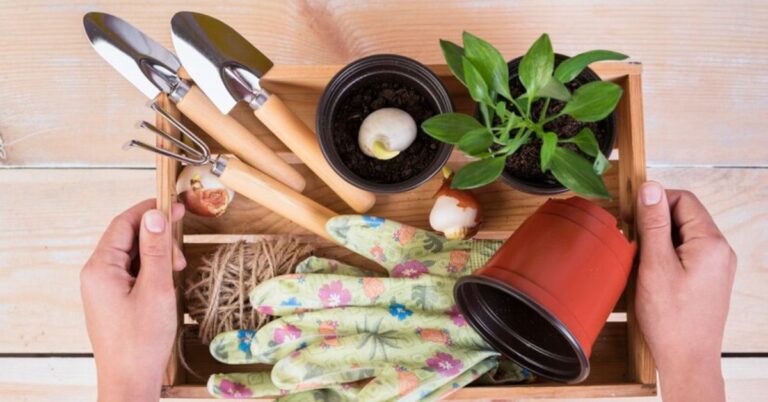Gardening is more than just a hobby—it’s a way to connect with nature, cultivate your own food, and create a beautiful space. Choosing the right gardening tools can make all the difference in the health of your plants and the ease of maintaining your garden. With so many options available, how do you select the best tools for your needs? In this guide, we’ll explore essential gardening tools, tips for choosing quality equipment, and how to maintain your tools for longevity and efficiency.
Why Quality Gardening Tools Matter
Gardening is a labor of love, but it’s also hard work. Using subpar tools can lead to frustration, fatigue, and even injury. Investing in high-quality gardening tools ensures you can tackle any task with ease, from weeding to digging to pruning.
Benefits of Durable Tools
- Improved Efficiency: Durable tools allow you to work faster and more effectively.
- Long-Term Savings: While high-quality tools may cost more upfront, they last longer, saving you money over time.
- Ergonomic Design: Many premium tools are designed with user comfort in mind, reducing strain on your body.
What to Look for in Gardening Tools
When choosing gardening tools, consider the following factors:
- Material: Tools made from stainless steel or carbon steel resist rust and maintain sharpness.
- Handle Design: Ergonomic handles made from wood, fiberglass, or rubber can improve grip and comfort.
- Weight: Choose tools that are sturdy but lightweight enough for prolonged use.
Essential Gardening Tools for Every Gardener
Having the right tools in your arsenal can make your gardening tasks much more manageable. Here are some must-have tools to consider:
1. Shovels and Spades
These are fundamental for digging, planting, and moving soil. A round-point shovel is great for digging large holes, while a flat spade is better for edging and cutting through roots.
2. Pruners and Shears
Pruning tools help you maintain healthy plants by trimming away dead or overgrown branches. Bypass pruners are ideal for live plants, while anvil pruners work well for dead branches.
3. Rakes
A garden rake is indispensable for leveling soil and removing debris. Leaf rakes, on the other hand, are perfect for gathering leaves and other light materials.
4. Weeders
Weeding is a necessary part of gardening, but it doesn’t have to be tedious. Long-handle weeders and cultivators, like the www.cobrahead.com long handle weeder, make it easier to reach deep-rooted weeds without bending over.
Specialized Tools for Advanced Gardening
For gardeners looking to take their skills to the next level, specialized tools can enhance productivity and precision.
1. Soil Test Kits
Understanding your soil’s pH and nutrient levels is crucial for plant health. Soil test kits provide quick and accurate results, allowing you to amend your soil as needed.
2. Compost Turners
A compost turner is a must-have if you’re composting at home. It aerates your compost pile, speeding up the decomposition process and ensuring nutrient-rich compost for your plants.
3. Hori Hori Knife
This versatile Japanese gardening tool combines the functions of a trowel and knife. It’s perfect for digging, cutting roots, and even measuring planting depth.
4. Drip Irrigation Kits
Automated irrigation systems save time and water. Drip irrigation kits deliver water directly to plant roots, reducing waste and promoting healthy growth.
How to Care for Your Gardening Tools
Proper maintenance extends the life of your gardening tools and ensures they perform well season after season. Here are some essential tips for tool care:
Cleaning Your Tools
After each use, clean your tools with water and a stiff brush to remove dirt and debris. For tools with sap or resin buildup, use a cloth soaked in mineral spirits.
Sharpening Blades
Dull blades require more effort and can damage plants. Use a sharpening file or whetstone to maintain a sharp edge on pruners, shears, and shovels.
Preventing Rust
Rust can quickly render tools unusable. Dry your tools thoroughly after cleaning, and apply a light coat of oil to metal surfaces for added protection.
Storing Tools Properly
Store your tools in a dry, sheltered location. Hang them on hooks or keep them in a toolbox to prevent accidental damage.
Sustainable Gardening Practices
Gardening isn’t just about beautifying your yard—it’s also an opportunity to make a positive impact on the environment. By adopting sustainable practices, you can conserve resources and promote biodiversity.
Mulching
Mulch helps retain soil moisture, suppress weeds, and regulate soil temperature. Organic mulches, such as wood chips and straw, also break down over time, enriching the soil.
Composting
Turn kitchen scraps and garden waste into nutrient-rich compost. This reduces landfill waste and provides a natural fertilizer for your plants.
Planting Native Species
Native plants are adapted to your local climate and soil conditions, making them easier to care for and more beneficial to local wildlife.
Water Conservation
Use rain barrels to collect rainwater for irrigation, and water your garden in the early morning or evening to minimize evaporation.
Conclusion
Choosing the right gardening tools and adopting sustainable practices are key to creating a thriving garden. Whether you’re a novice gardener or an experienced green thumb, investing in quality tools and taking proper care of them will pay off in the long run. By making thoughtful choices and embracing environmentally friendly techniques, you can enjoy a garden that’s as rewarding as it is beautiful.

